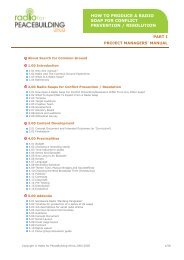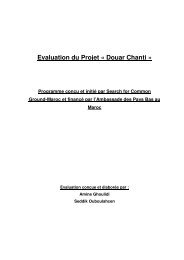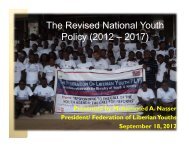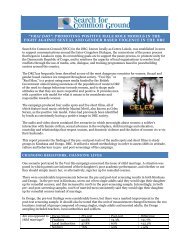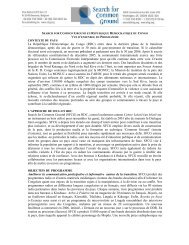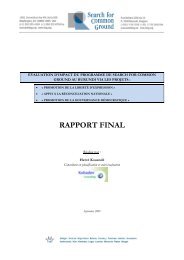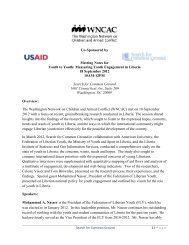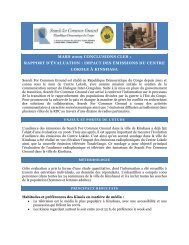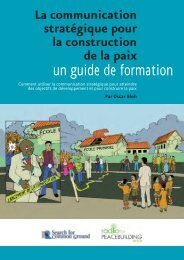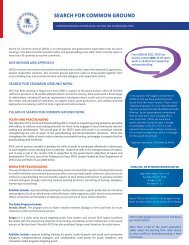The Common Ground Network for Life and Choice Manual
The Common Ground Network for Life and Choice Manual
The Common Ground Network for Life and Choice Manual
You also want an ePaper? Increase the reach of your titles
YUMPU automatically turns print PDFs into web optimized ePapers that Google loves.
Appendix 4.1<br />
General Guidelines <strong>for</strong> Dialogue Facilitation<br />
1. <strong>The</strong> Facilitator’s Role. <strong>The</strong> facilitator’s role is to help the group function effectively <strong>and</strong><br />
within the ground rules. “Effectively” here means:<br />
• being impartial, in your role, between pro-choice <strong>and</strong> pro-life participants which<br />
requires not participating in the substantive discussion, being even-h<strong>and</strong>ed, <strong>and</strong><br />
taking care with the language you use, e.g. pro-life, not anti-choice, pro-choice,<br />
not pro-abortion;<br />
• keeping the conversation focused by offering, <strong>and</strong> bringing people back to, the<br />
questions <strong>for</strong> dialogue provided in the workshop design;<br />
• being the timekeeper by both insuring that speaking time is shared <strong>and</strong> moving<br />
the conversation along within the bounds of the workshop schedule;<br />
• explaining <strong>and</strong> coaching communication skills that promote dialogue, <strong>and</strong><br />
bringing to the group’s attention behavior/speech that you observe inhibiting the<br />
dialogue.<br />
It is important that the facilitator maintains openness to outcome, not injecting, however<br />
indirectly, a result that the facilitator thinks is desirable. <strong>The</strong> facilitator also models a spirit<br />
of inquiry where questions reflect genuine curiosity. And the facilitator models good<br />
communication skills, both verbal <strong>and</strong> nonverbal. Finally, because of the subject of this<br />
dialogue, an attitude of caring <strong>and</strong> empathy is needed.<br />
One practical point: participants will often look at, <strong>and</strong> talk to, the facilitator to the<br />
exclusion of other participants, particularly when the facilitator poses the dialogue<br />
questions. Since the goal is to have people in dialogue with one another, try to break this by<br />
looking away from the speaker towards other participants. You may even need to say<br />
something about this (in a light way) <strong>and</strong> remind people to talk to one another.<br />
2. Active Listening. Active listening is the skill of repeating back to the speaker what he or<br />
she said, being accurate but eliminating any inflammatory adjectives. A goal <strong>for</strong> the initial<br />
dialogue is to have a participant on the opposite side of the issue do this active listening.<br />
Although this <strong>for</strong>m of communication may seem a little stiff at first, it is especially important<br />
to include it in situations that are polarized. <strong>The</strong> two sides are so sure they know what each<br />
other is going to say, that often they do not listen, or they listen with such a thick filter, that<br />
only a portion of the message gets through. Active listening can be a key tool in breaking<br />
through the stereotypes <strong>and</strong> in developing real underst<strong>and</strong>ing. It is good <strong>for</strong> a person on one<br />
side to have the experience of really being heard by someone on the other side; so it is not a<br />
waste of time at all. It is an essential part of the two groups re-learning how to speak with<br />
one another.



